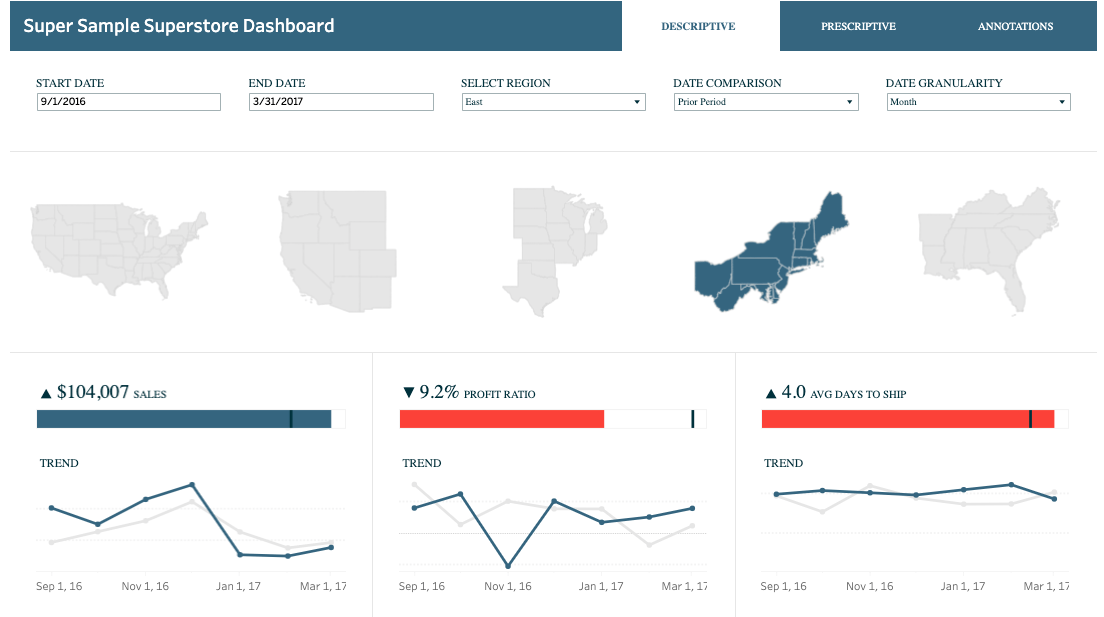Table Of Content

It’s the first thing we notice, and it can immediately highlight specific insights or identify outliers, but it is not an unlimited design resource. Next, let’s create a visualization for predicting the Future of COVID-19 cases in India. You should use the Indian States group, and the COVID confirmed cases column from the provided data. The Boxes and Whiskers plot will be used for presenting the visualization. Moving on, let’s create the next visualization to look at the COVID-19 variations happening in the INDIAN states. This worksheet will use the Indian States Group and the Recovery column from the dataset and draw the recovery insights.
Ways to Publish & Share Tableau Dashboards
Make sure that font selection is done to reinforce a visual hierarchy within your visualization through size, boldness, color and type. Chart choice should depend on the question you are trying to answer or a specific insight you are trying to communicate. There is almost always a trade-off involved, with different chart types each having their own advantages and downsides. You should always ask yourself if your chosen chart type best conveys the message you are trying to share and if it can be easily understood by your audience.

Step 6: Build a dashboard to show your insights
Many data visualization tools like Tableau exist in the market, including Power BI, SAS and Qlikview. Despite this, a significant number of clients consistently choose Tableau. They favor it for its remarkable flexibility and user-friendly approach to data analysis. In the example below, the County and State are highlighted through a bold effect and color change, and we don’t have to partition our scatter plot further. This helps save space and declutter the dashboard so our viewers can focus on gleaning insights instead of interpreting the visualization. A Tableau Dashboard is a presentation of multiple data visualizations and insights on one single screen.
Professional Certification Program in Data Science & A.I
I will go ahead and select zero decimal points for the sales & profits figures and one decimal point for the year over year percent difference numbers. Consider the number of decimal points necessary and be consistent throughout the dashboard. In this dashboard, some numbers have zero decimal points, others have two, and in the table on the lower left there are numbers with three and four decimal points. When your chart has a descriptive title, such as the titles of both line charts, you can get away with removing the y-axis labels. Very few things annoy me as much as labels that don’t quite fit in the space provided, with the possible exception of vertical labels. We can solve both problems by using month abbreviations, which will fit nicely in the chart.
Sales Growth Dashboard
To first get started with the Sample Superstore, you will have to select a date range and region to coordinate your actions. In fact, it will yield better results when the sales rep makes use of it all day. This will help them stay focused and guide them through the process of making result-oriented decisions.
Check your work! Watch "Add interactivity" in action
Adhering to these dashboard guidelines will help you design for beauty, impact and insight. Visual best practices are key to developing informative visualizations that drive your audience to act. A dashboard is successful when people can easily use it to derive answers.
Design Tips for Better Business Dashboards in Tableau
The table below explains the chart types in Tableau’s Show Me panel and when to use each. This should be published to your enablement intranet to educate new users. The left-hand panel of the dashboard provides you with various options for setting the presentation screen according to the device. On the left-hand side, the worksheet visualization created will now be available. Creating a Tableau Dashboard is simple, just drag and drop the worksheets onto the Dashboard Canvas. Show/Hide buttons let dashboard viewers toggle the visibility of dashboard objects, revealing them only when necessary.

Executive Program in Data Science & A.I
Show/Hide buttons can be particularly helpful when you want to temporarily hide a floating group of filters to reveal more of a visualization. Adding a light gray background to the entire dashboard and a white background for the charts, makes the charts seem like they are popping off the screen. Additionally, hiding the filters with a show/hide button creates a much cleaner dashboard overall. A dashboard is a collection of several views, letting you compare a variety of data simultaneously. For example, if you have a setof views that you review every day, you can create a dashboard that displays all theviews at once, rather than navigate to separate worksheets. You can use the Highlight button on the toolbar to set up highlighting between views.
Professional Certification Program in Data Science & A.I (06 Months)
It provides real-time updates, so sales teams are always working with the most current information. The dashboard is user-friendly, ensuring even those new to Tableau can navigate and understand the data presented. This allows sales managers to make data-driven decisions to reassign territories or provide additional support where needed. It provides a clear, visual layout of sales territories, aligning them with the right sales representatives. The Sales Growth Dashboard stands out as a vital tool for businesses aiming to track their sales progress and pinpoint areas for improvement. In essence, the Quarterly Forecast Sales Dashboard is a vital asset for businesses aiming to turn data into a competitive advantage.
Comparison between ArcGIS Dashboard, Tableau Dashboard, and R Flexdashboard - Towards Data Science
Comparison between ArcGIS Dashboard, Tableau Dashboard, and R Flexdashboard.
Posted: Wed, 12 Jan 2022 08:00:00 GMT [source]
One way we can do this, is to reduce any unnecessary elements from the dashboard that increase cognitive load without providing anything useful. Mark my words designing a great Tableau dashboard requires careful planning, attention to detail, and a focus on creating a visually appealing and informative design. By following these tips and tricks, you can create a dashboard that effectively communicates your data and insights to others in a way that is easy to understand and engaging.
When designing a dashboard, you need to consider your audience, and how you can communicate to them that they can interact with the dashboard. Skilled users know to click and experiment, but new users may not have the knowledge or confidence. Your job is to help them make these decisions consciously, not by accident. Color is one of the most powerful aesthetic features because it’s an attention-grabber.






















